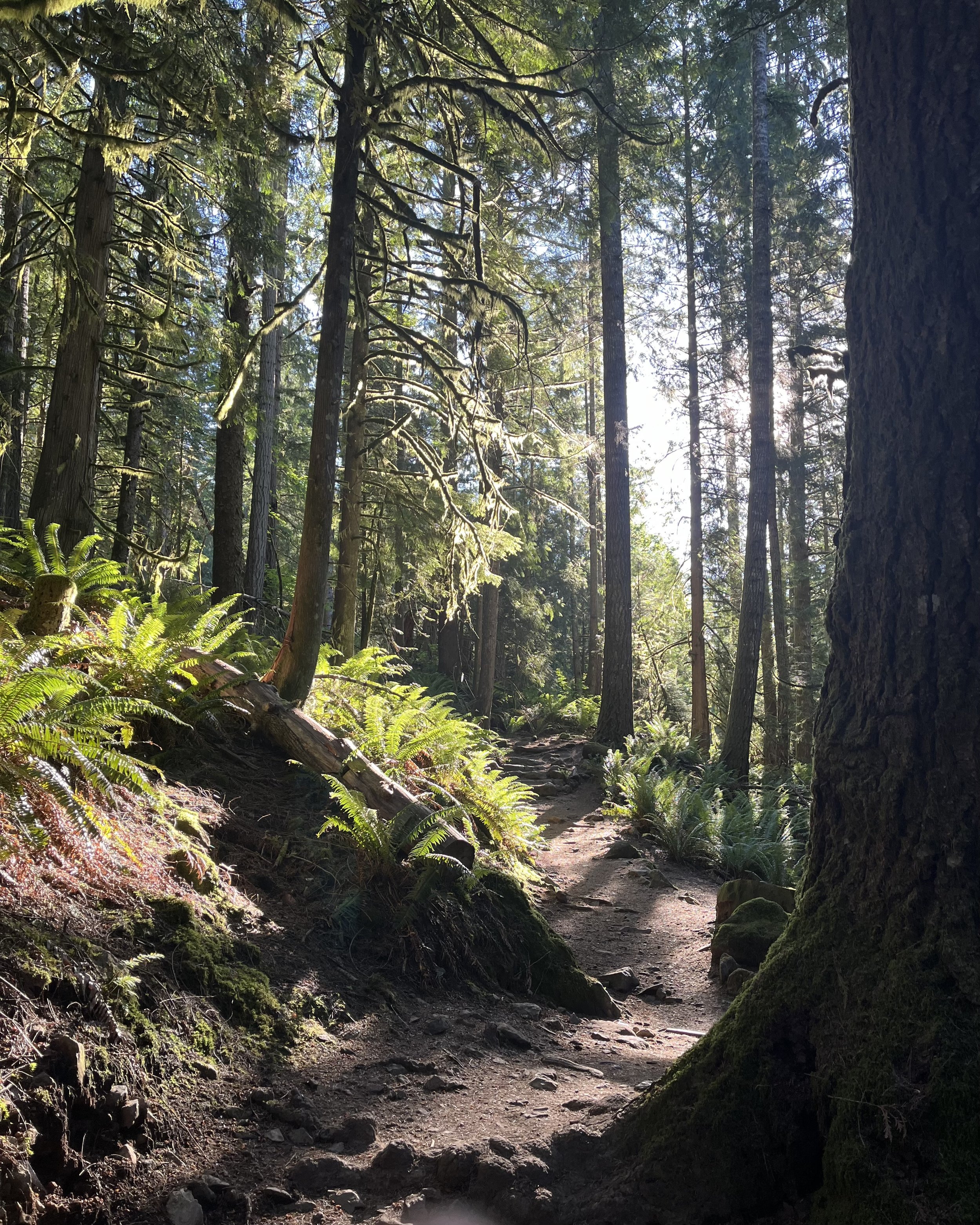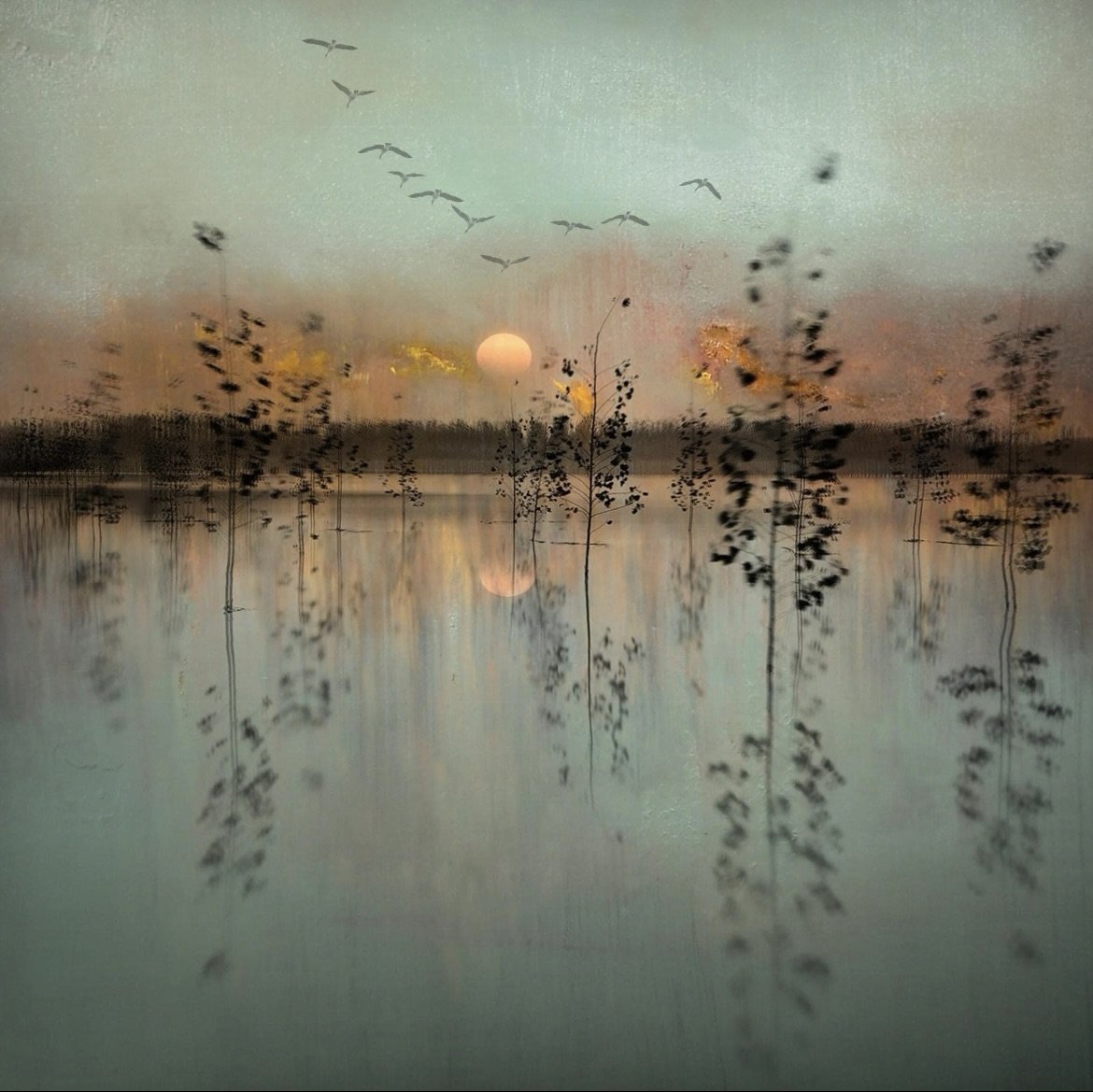TCA Summer News - June 2024
Greetings to you all. On the summer solstice, as I walked through Seattle’s Discovery Park with both the black-blue Puget Sound and Mt. Rainer gleaming in the background, I was taken with the soft amber glow that sparkled through the trees. It was a ki festival of light flickering between the big leaf maples and the venerable western cedars. Feeling the sun’s warmth on the back of my neck and noting the long evening light, I thought of O’Sensei’s words inviting us “to bath ourselves with wisdom and love, place ourselves in the heart of mother nature.” This is the longest day of the year, when it is light until after 10:00PM. I stopped in my tracks and felt gratitude for the natural world as a glorious teacher. I felt my inner opera voice radiate across the planet.
Waking Up
To have faith is to trust yourself to the water.
When you swim you don’t grab hold of the water,
because if you do you will sink and drown.
Instead, you relax and float.
-Alan Watts
Recently, one of my dear friends introduced me to the ‘Waking Up’ app. It offers a daily short, guided meditation and talks. One might say “only 10 minutes?” but surprisingly, the time frame has proved to be a snappy way to crystallize my attention for a concentrated period…and beyond. Sam Harris is a neuroscientist and author who crafted this vehicle to examine one’s mind with a grounded touch. The exercises he offers are both mind calming and mind bending. In the several months I have used the app, I find myself noticing little things, like where am I breathing from while in traffic? How am I listening to myself in the silence of the moment? How do I listen to my friends and family in daily conversation?
The app also provides short talks voiced by selected meditation teachers, young and old. Yesterday, Alan Watts, an English deep thinker and one of the first Western scholars to interpret the teachings of Buddhism and Taoism for a Western audience, popped into the meditation with a funny story about learning without forcing. He said, “In so many artistic and athletic skills, you will find a unique teacher who will show you how to do things without forcing it.” He went on to talk about a piano teacher he found late in life who asked him to play a tune, and then told him he was too stiff. The teacher encouraged Alan to play the piano by first simply relaxing his hands on the keys. “Just let your arms fall onto the ivories and later you can choose to have your fingers touch on the right notes.” Seems farfetched at first, but….
Like some of us who played the piano as children, Alan had that classic challenge of coping with a teacher who would rap his knuckles with a pencil every time he missed a note. I laughed out loud when I heard this, as it instantly blasted into my consciousness Sister Humperdinck, my own 3rd grade piano teacher. She used a wooden ruler, and she was mean. To this day I try and love touching the keys with my fingers, and I still wrestle with those thoughts about mistakes.
A Visitor At the Dojo
Alan Watt’s advice about learning the piano is consistent with my experiences with excellent Aikido teachers who encourage being in the flow. When a surprise visitor instructor, Takeshi Sairenji Sensei, 8th Dan, bowed onto our mat last week, he insisted that we swing our arms freely and easily. This is his third visit to Two Cranes.
Every single time he steps onto our mat, another light bulb turns on. He encouraged us to feel our extension as a whip and let uke respond to the propulsion. He tossed ukes over and over, reminding me of the challenging ways of training I experienced when visiting Japan. The non-stop ukemi was both a precious and grueling lesson. Like O’Sensei at 80, Sairenji Sensei is a 5-foot-tall elder who appears small in stature off the mat, and who came alive on the mat, jettisoning ukes left and right like a baseball machine spitting out balls to batters at mock speed. The whole dojo felt the joy. It was a victorious example to students, young and old, of the power of embracing ki, no matter your age. His granddaughter now practices in our children’s program.
Almost 30 Years
This June marks almost 30 years of Two Cranes Aikido and almost 15 years for Two Cranes Institute. When I step into the dojo, I draw in a breath of appreciation for this place we have to practice. No matter how I feel prior to unlocking the door, that next moment I focus on gratitude for stumbling onto a practice that has guided me, and others, to reach for our truest potential each and every day. So far, this year has brought lively and buoyant training time. We opened the year with a national gathering of women instructors: Mary Heiny, Joanne Veneziano (Emerald City Aikido), and Melissa Bell (Aikido of Sarasota) Senseis together to share laughter and luminosity. In the spring, at Matsuri time, we hosted magic Michael Friedl (Aikido of Ashland), and spiral-making Dennis Wheeler (Aikido of Santa Cruz) Senseis, along with our own David Hurley Sensei. These three guided us in spiraling through space and creating profound connections with each other in our bodies and our minds.
In between seminars, we offer an ongoing series of intensives that include a detailed study of ukemi, randori and sword, and Bo practices. Two Cranes instructors work together to develop curriculum and teach. Every time the materials are fresh and thoughtful. In the full-speed randori training last month, the preparation required encouragement to let go and relax. Students who might not previously have trusted themselves discover that many, many repetitions lead to ease and freedom. After four rounds of randori pass, people are exhausted and … astonished by how they might experience their own personal freedom. And in June, we celebrated our children and teens with a fabulous year -end youth demonstration celebration, sharing with friends and family their vibrant practice.
The Granlibakken Retreat
Each June, folks from all over the country and beyond make the trip to Lake Tahoe, California, to practice Aikido at The Granlibakken Retreat. This camp’s humble beginning took place ten years ago in Quincy, California, at the Feather River College with Frank Doran and Bob Nadeau Shihans, along with other wonderful senior teachers. Since then, with the help of our Retreat Manager Jeramy Hale, Michael Friedl Sensei, Craig Fife Sensei and I moved our location to the Granlibakken Resort, where people from over twenty-six dojos have joined us for a one-week immersion in training. People have a chance not only to train as much or as little as preferred, but also to experience the beauty of Tahoe, incredible food, as well as the opportunity to see longtime colleagues and make new friends.
One of our goals is to highlight the mentor aspect of this retreat; focusing on how we can learn from each other. It’s a chance for dojo chos nationwide to collaborate with Michael, Craig and myself - discuss plans to teach a class, put it in motion, and receive feedback at the finish line—with lots of study, discussion, and laughter in-between.
Midway through the retreat, a young man approached me requesting a short conversation. “I know you run a dojo,” he said, “but… what is your other job?” (Note that he didn’t say: “what is your real job?”!) “I want to open a dojo in the future,” he said, “but I’m not sure how that works.” I was quiet for a moment, pondering the umpteen ways I might respond. Three things came to mind:
You grow with the job. Most of us who have embraced the task of running an aikido school learned the job on the job. I’m not familiar with any academic program that coaches Aikidoists to be chief instructors. It’s an organic process. I learned to teach by watching my instructors and stealing what made sense to me.
Keep your center. As a dojo grows, so to do the responsibilities to keep it flowing. As long as you keep it rolling smoothly, with the help of your students and other allies, it’s great. But when it gets out of hand, it’s a little like the chocolate factory episode of I Love Lucy (I date myself). It starts out so smooth, with Lucy and Ethel wrapping the candies at their new job. But when assembly line speeds up, they can’t keep up. They end up stuffing chocolates everywhere: in their mouths, pockets, chef hats, and finally down their shirts. Disaster…but very funny!
Shape the students who will be the next generation of Aikido leaders. There are so many hidden tasks involved in operating a dojo. It’s important to share with your senior students what it takes to create a rich community like: Quarterly seminars to be arranged, first aid supplies to buy, monthly dojo cleanings to plan, mock tests to schedule, teacher meetings to calendar, introductory classes to shape, randori intensives to develop, and business administration to be maintained. Then there’s the true work: caring for each student as they evolve in their training. Feeding those who are recovering from surgery with food trees, counseling the ones whose health struggles require them to change the way they train on the mat, encouraging young students to advance from children and teen classes to the adult program.
I have said this before in closing, but it keeps having meaning. Whatever you choose to focus on this year, may your practice be beneficial, may your discoveries be monumental, and may our sense of family be far-reaching. As O‘Sensei says: Universal consciousness is our birthright.
Wishing you all a lovely summer.
Kimberly



